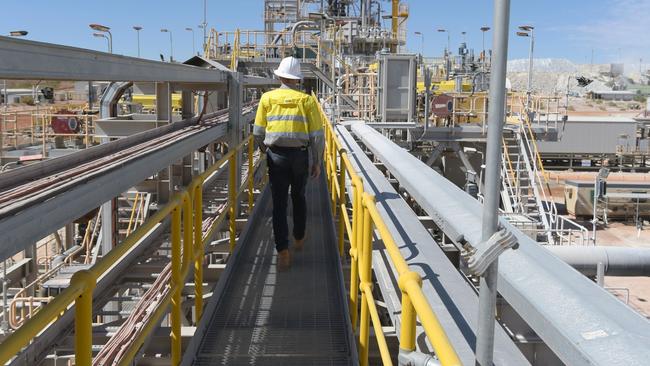Miners are voting with their wallets on lithium, as the downstream dream recedes
Everybody says they want Australia to build a downstream manufacturing industry in lithium. But is the market quietly moving away from that goal?
If recent moves in the lithium market are anything to go by, the latest generation of Australian politicians might be about to join their predecessors in waving goodbye to hopes of a major industry processing Australian-mined minerals.
It may be too early to make that call, but the current indications suggest that Australian lithium producers are voting with their wallets, and looking to make their margins in the mines rather than building integrated downstream businesses.
In July MinRes dressed up its pullback from the downstream aspects of its portfolio over concerns about “locking up money” in China – but MinRes founder Chris Ellison’s comments that the bulk of the value of the company’s Australian lithium deposits are “in the rock” were also telling.
Instead of lithium hydroxide plants producing battery-grade chemicals, Ellison flagged production of a midstream product grading 25 to 30 per cent – enough to get much of the bulk out of the company’s exports, but not a true chemical operation.
That’s also the emerging strategy of Pilbara Minerals. Pilbara has a joint venture with POSCO for a lithium hydroxide plant in South Korea – but its local ambitions now seem confined to a midstream product to upgrade the value of its local lithium concentrate.
Pilbara Minerals boss Dale Henderson told The Australian last week he believed the sector was still trying to work out where they would be best placed to make money in the broader global supply chain.
“The industry is establishing itself so there’s different permutations being deployed here, ranging from Australian homegrown hydroxide facilities, to tolling arrangements, to others looking at developments through Asia, Indonesia, and other locations in Europe and North America,” he said. “Ultimately those economic principles of lowest-cost production and highest sales price based on product quality will prevail.”
Two examples don’t confirm anything, but corporate moves suggest lithium producers and hopefuls are positioning themselves to get product to market quickly, rather than fulfil the hopes of politicians – who have, as always, been slow to move on this issue.

But industry insiders point to other recent MinRes moves as a clear sign its strategy is shifting.
Last week MinRes emerged as a major stakeholder in Delta Lithium – mirroring its move on Essential Metals earlier this year.
What’s at stake in Delta? Like Essential – where MinRes is effectively shepherding its stake to a friendly party in Bill Beament’s Develop Global – Delta has a small near-term mining opportunity broadly within trucking distance to MinRes’s Mt Marion mine and processing plant.
But its most exciting prospect is exploration at its Yinnetharra deposit about 480km south of Onslow, where MinRes is building a new port.
Add to this Liontown’s decision to direct ship some of its ore to get early cash flow, and Friday’s announcement by Core Lithium it had also sold a parcel of fines as a low-grade product to ship direct to customers.
Industry sources also suggest that soaring interest in the market’s latest lithium darling, Azure Minerals, has been spurred by the fact that the company’s Andover deposit is only a stone’s throw from the Dampier Port as much as by its size and grade.
Morgan Stanley analysts noted recently that Australian concentrate prices are effectively setting the margins for China’s refining industry at the moment, particularly in the refineries that are not part of integrated supply chains that make up the top end of the lithium production cost curve.
In the long term that might support the development of more integrated supply chains based on Australian mines.
But taken all together, the picture that is emerging is that of an industry narrowing its focus on getting a product to market than it is on value adding.
No spot prices exist for direct shipping lithium ore. But industry sources note that, even if ore grading around 1 per cent fetches only a 10th of that of 6 per cent concentrate, at current prices that would still be about $350 a tonne – the kind of prices bulk miners in iron ore can only dream of, and the kind of pricing that recently delivered massive profits in the Queensland coal industry.
Lithium will never be a bulk commodity and will never have the efficiencies of scale of iron ore – mining costs will never compete with the $US20 a tonne in the Pilbara. But the margins may still be there for swing producers shipping direct ore.
What does all of this mean? It is probably too early to tell. But if recent trends continue, it very much suggests that simple economics will dictate that Australian mining sticks to its traditional pattern, digs and ships efficiently, and leaves the processing to the rest of the world.





To join the conversation, please log in. Don't have an account? Register
Join the conversation, you are commenting as Logout